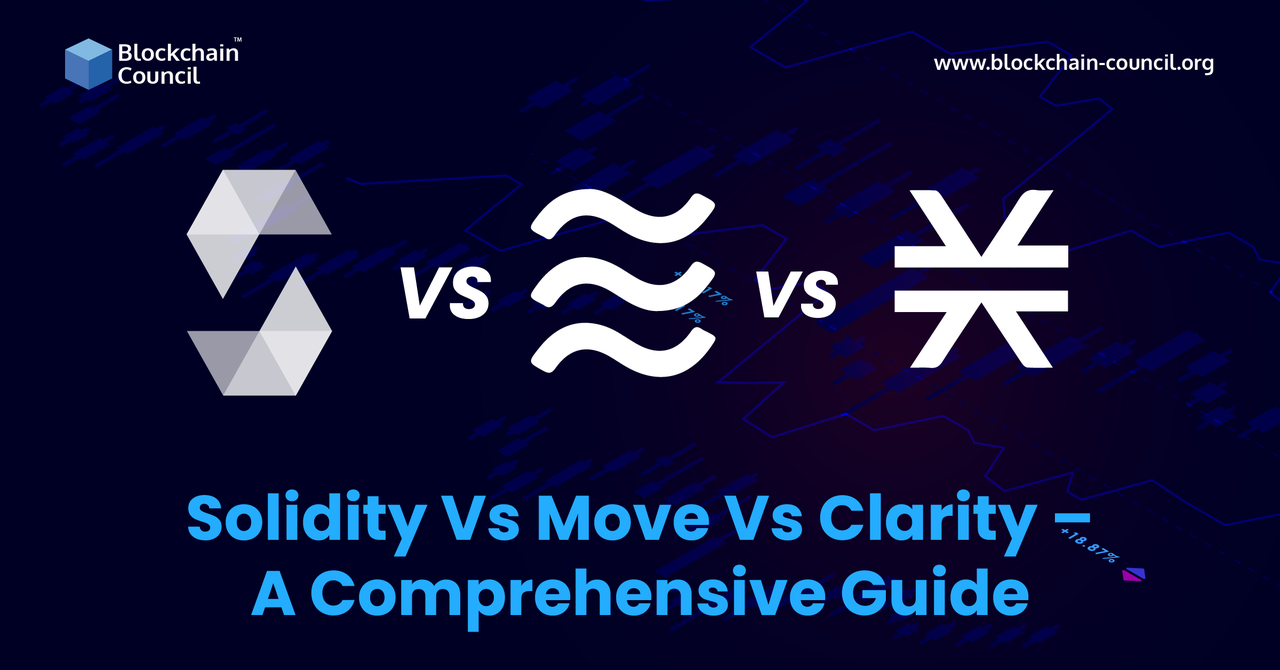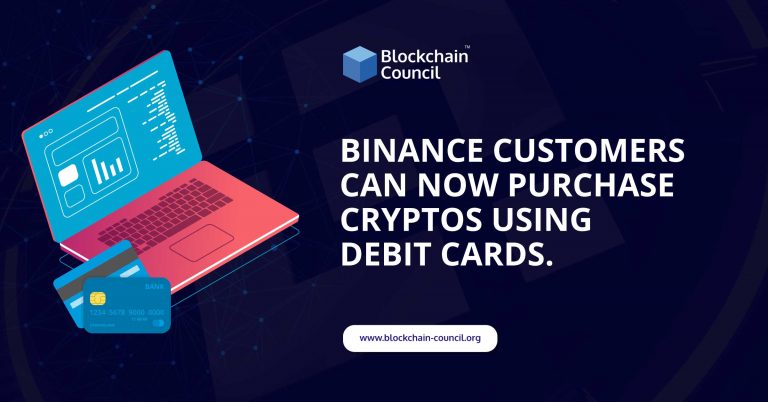
- Ayushi Abrol
- March 16, 2022

Technology is a fast and radically growing platform where blockchain has become one of the biggest technologies to enter the Web 3.0 era. While companies and nations are moving on to new technologies for finance and other sectors, Blockchain has become one of the main platforms to set up such applications. Since it is decentralized and constantly evolving, it has become the perfect platform for using smart languages as well. Smart contracts created on the blockchain platform allows the developers to create new and better apps that could integrate and coordinate with the user to develop better interaction.
Three of the major smart contract languages that are used in Blockchain are Solidity, Move, and Clarity which allows the developers to create these smart contracts, but with customized codes which makes it easier to use one different blockchain platform. Smart contracts are useful and needed to regulate the exchange of resources including financial transactions. Smart contracts are nothing but coded programs with instructions. To specify the conditions in a smart contract the developer needs to use a language which can be one of Solidity, Move, or Clarity, based on the user requirement. As a result, it’s critical to analyse and comprehend the differences between all three programming languages, as well as the advantages each may offer a blockchain application. Here are some of the major details of all the three that you need to know before developing a blockchain app on it.
What is solidity?
In simple terms, it is a programming language that is used to govern and control the behavior of the accounts within the Ethereum state. It is an object-oriented high-level programming language and is influenced by other languages like C++, Java, and one of the widely used programming languages Python.
This language is used to implement smart contracts in the Ethereum Virtual Machine. A small contract is basically a program that is created to handle the primary governing task. Since it is used in blockchain, the language can be used to create small contracts for tasks like voting, wallets, crowdfunding, and a lot more. The Ethereum ecosystem can be used to support different cryptocurrencies and to create blockchain solutions, Solidity is used.
How does solidity work?
Ethereum Virtual Machine or EVM is the main component on which Solidity works. The EVM is a virtual computer in the blockchain which runs the code as an application, which is inspired by human ideas. Solidity actually creates a machine-level code that runs on the EVM, which is then converted by the compiler for the processor to run the code. Remix online compiler, command-line compiler on a PC are some of the examples of compilers used in Solidity.
How can solidity be used in Ethereum?
People who created Ethereum were also the people behind the evolution of Solidity, it is why it was created on the platform of EVM to create various types of contracts. Now, these contracts created for Ethereum help to create a smart contract that is used to implement business logic, which further helps to generate a chain of transaction records. Since Solidity is the core language used in cryptocurrency like Ethereum, it creates a smart contract with high-level program codes.
Solidity differs from other innovative contract languages in the following respects:
- Multiple inheritances are supported, and C3 linearization is used.
- Members of contracts with structs and hierarchical mappings may have complex member variables provided by this feature.
- A wide range of programming features includes support for state objects or variables.
- Several type-safe functions may be implemented in a single contract using Solidity’s Application Binary Interface.
- Contracts made through Solidity allows multiple users to participate in a network, be it from any other geographical location or using a different currency.
- Since the elements of this programming language have been taken from JavaScript and C++, it is much easier to understand and write blockchain applications.
- It can also be used to write programs in other networks like Monax, Tendermint, Burrow Blockchain and more.
What is Move?
Just like Solidity was a programming language for EVM, Move is a programming language for Diem Blockchain. However, Move is not like Solidity. Infact, the origin of Move happened due to the renowned issues that were found in Solidity. It is basically a bytecode language that is used to create smart contacts as well as custom transactions on the blockchain. It mainly tries to focus on two major digital assets which are scarcity and access control. Where scarcity prevents any double-spending and imposes restrictions on assets creation, Asses control deals with maintaining ownership and privileges.
How does it work?
Move language basically has three major components which are Types, Struct, and Procedures. The Types are primitive data types used in it such as Boolean, Integer, fixed-size byte arrays, and address data type. Structs are basically restricted and unrestricted which are resource structures and general structures. Procedures are simple methods in the Move programming language.
Where is it used?
Move programming language was developed to create new financial applications with services that should not be limited to a certain group of people only. Since it was developed from Diem Blockchain, its initiative was to bring financial inclusivity for everyone. The programming language was created to endure applications that ensure a global financial infrastructure and currency which can be used by people the world over. It basically provides a safe programmable foundation that is used to implement Diem currency and other business logic for financial institutions. It enables users to write programs as blockchain applications that can be directly integrated with the digital assets.
Move differs from other innovative contract languages in the following respects:
- Direct integration of the programs with digital assets.
- Resources in Move are opaque to invocations from external sources as it features transparency in modules.
- Modules in Move language allow flexibility for safe code composition.
- It is capable of ensuring on-china verification for all the safety traits.
- It has the static determination of call site as it lacks dynamic dispatch to avoid any complex call graph.
- It allows for the isolation of modules for functional verification.
- It rejects or does not allow programs that do not have properties like type, memory, and resource safety.
- It provides limited mutability for utilization of reference type.
What is Clarity?
Clarity is another programming language on the Blockchain platform which is used to create smart contracts on Stacks 2.0 Blockchain. One of the major advantages of the Clarity programming language is that it allows the user to provide their own condition for transactions instead of pre-programmed ones. The programming language also prevents any unexpected transfer of tokens for increased security. It also helps to enable the support for programmatic control over digital assets. The most important feature of Clarity is an aspect of certainty that offers a “decidable” programming language, which defines what the program will be doing with the code.
How does it work?
Clarity comes with the feature of interpretability which makes sure that the program code could be executed on all the blockchain nodes with flexibility. The language also makes sure that there are no compiler bugs and it also addresses the issue. Clarity offers different types and also type checkers which reduces the number of bugs substantially in the program. It works with the aspect of certainty and provides static analysis of the while call graph.
Where is it used?
Similar to other languages, it is also used to make smart contracts in the blockchain environment but apart from that it also allows the developers to accurately predict how their contracts will be executed. t is mainly used to create financial blockchain apps where the users are able to define their own condition, something that is not available in other programming languages for blockchain. Also, they are directly broadcasted on the blockchain as written by the developers which ensures that the code written by the developers is exactly what is executed.
Clarity differs from other innovative contract languages in the following respects:
- Clarity does not have a compiler that makes sure that the programs are executed on blockchain in the original state as written by developers.
- To prevent any unexpected transfer of tokens, users are allowed to write their one condition for the transaction.
- Predictability is one of the most important features of Clarity, which allows programmers to know how the program will be executed.
- It has the option of programmatic control over digital assets.
- The interpretability feature allows programs to publish source code on all blockchain nodes with flexibility in execution
Differences Between Solidity, Movement, And Clarity
While all the three programming languages are used to create smart contracts for blockchain developments, they still differ from each other in various aspects.
The first aspect that differentiates between the three is the blockchain platform they are based on. While Solidity is based on the Ethereum platform, Move is based on Diem, and Clarity is based on Stacks 2.0.
Compilation
While executing the code, the compiler is a necessary requirement and for that Solidity and Move are two languages that require compilation. However, Clarity is the only one that does not require the compiler feature as it is an interpreted language.
Data Types
All three programming languages support a whole lot of data types for easy input in the code. While Solidity support Booleans, enums, functions, addresses, integers, strings, byte arrays, and more, Move supports Booleans, references, unsigned 64-bit integers, fixed-size byte array, and 256-bit addresses. Lastly, Clarity has support for Boolean, Optional, tuple, list, response, and principal types.
Complex type
Solidity supports three types of complex types which are dynamic size array, structs, and mappings. Move on the other hand supports resources as complex types and structs. Lastly, Clarity supports mapping only.
Turing
While Solidity and Move are Turing complete programming languages, Clarity is intentionally tailored for turning incompleteness for preventing issues related to Turing.
Vulnerability
One of the major security concerns in blockchain app development is Reentrancy attacks and Solidity presents a notable case of vulnerability to these attacks. Move and Clarity does not pose any vulnerability like Reentrancy attacks.
Dynamic Dispatch
This process selects specific implementations and functions the user select to cal at runtime. While SOlidity plays the odd one in this case with support for dynamic dispatch, Move and Clarity does not support it.
Flexibility
If the user decides to add custom individual decisions in the contract, flexibility will matter the most in the programming language. Between the three, Solidity has the most or highest flexibility when compared to Move and Clarity.
Difference Table
Mentioned below is a table that clearly defines the different elements of all the three programming languages and how they have their own feature set.
Criteria |
Solidity |
Move |
Clarity |
Blockchain Platform |
Ethereum |
DIEM |
Stacks 2.0 |
Need For Compilation |
Yes, it is mandatory | Yes, it is necessary | Not required, since it is an interpreted language |
Supported Data Types |
Booleans, Address, Strings, Functions, Integers, Byte Arrays, Enums | Booleans, 256-bit addresses, References, UNsigned 64-bit integers, Fixed Size byte arrays, | Integers, Booleans, Principal, Response, Buffer, Tuple, Optional, List |
Complex Types |
Structs Fixed Size and Dynamic Type Arrays, Mappings | Structs, Resources | Mapping |
Turing Completeness |
Turing Complete | Turing Complete | Turning Incomplete |
Vulnerability to Reentrancy Attacks |
Vulnerability in an event of vulnerability in code | No signs of Vulnerability | No signs of Vulnerability |
Dynamic Dispatch |
Support for dynamic dispatch | No Support for dynamic dispatch | No Support for dynamic dispatch |
Flexibility of Use |
Highest Flexibility | Medium-Level Flexibility | Least Flexibility |
Conclusion
Solidity, Move and Clarity all are used as languages to create blockchain apps and contracts with their own set of similarities. All three languages are statically typed and have their own set of similarities. Among all the three Clarity might not be the most flexible, however, it does offer a lot of safety. Similarly, based on their features, all the three languages can help the developers create blockchain apps that can cater to the needs of the user


































































 Guides
Guides News
News Blockchain
Blockchain Cryptocurrency
& Digital Assets
Cryptocurrency
& Digital Assets Web3
Web3 Metaverse & NFTs
Metaverse & NFTs
